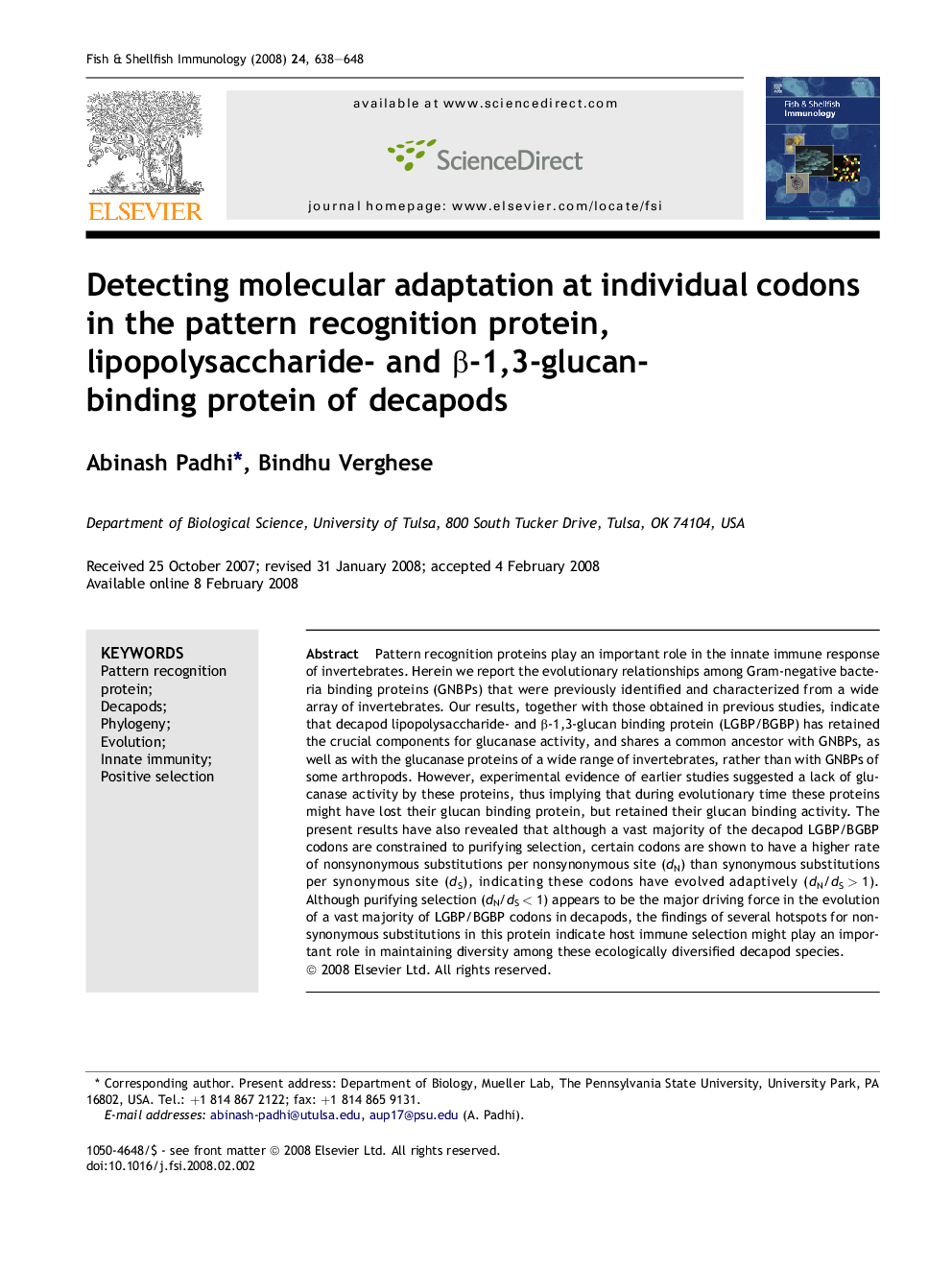| Article ID | Journal | Published Year | Pages | File Type |
|---|---|---|---|---|
| 2433457 | Fish & Shellfish Immunology | 2008 | 11 Pages |
Pattern recognition proteins play an important role in the innate immune response of invertebrates. Herein we report the evolutionary relationships among Gram-negative bacteria binding proteins (GNBPs) that were previously identified and characterized from a wide array of invertebrates. Our results, together with those obtained in previous studies, indicate that decapod lipopolysaccharide- and β-1,3-glucan binding protein (LGBP/BGBP) has retained the crucial components for glucanase activity, and shares a common ancestor with GNBPs, as well as with the glucanase proteins of a wide range of invertebrates, rather than with GNBPs of some arthropods. However, experimental evidence of earlier studies suggested a lack of glucanase activity by these proteins, thus implying that during evolutionary time these proteins might have lost their glucan binding protein, but retained their glucan binding activity. The present results have also revealed that although a vast majority of the decapod LGBP/BGBP codons are constrained to purifying selection, certain codons are shown to have a higher rate of nonsynonymous substitutions per nonsynonymous site (dN) than synonymous substitutions per synonymous site (dS), indicating these codons have evolved adaptively (dN/dS > 1). Although purifying selection (dN/dS < 1) appears to be the major driving force in the evolution of a vast majority of LGBP/BGBP codons in decapods, the findings of several hotspots for nonsynonymous substitutions in this protein indicate host immune selection might play an important role in maintaining diversity among these ecologically diversified decapod species.
